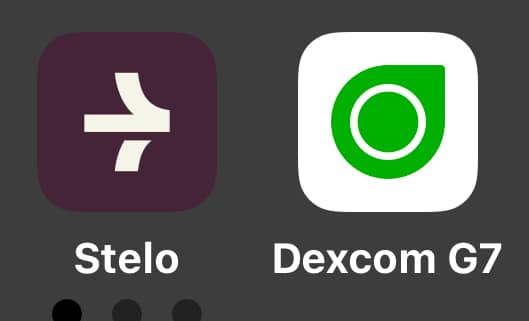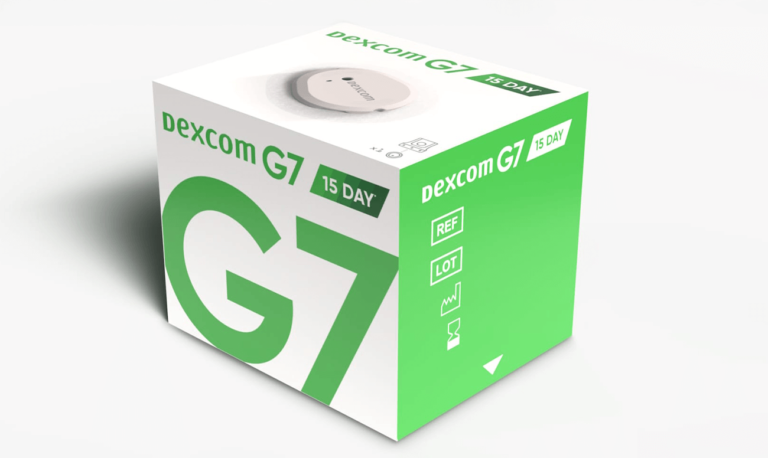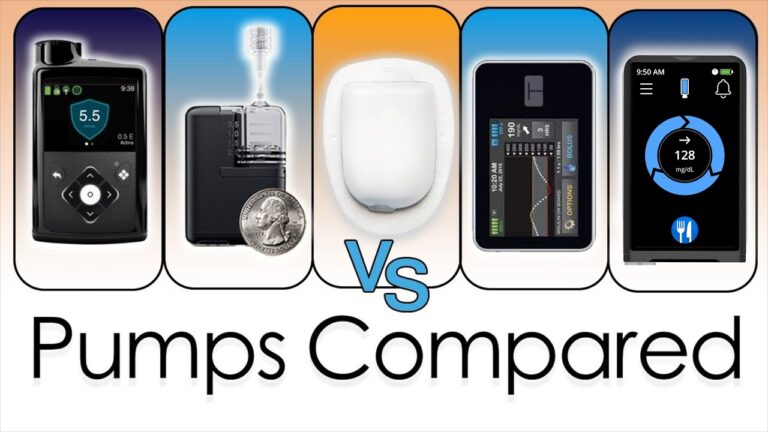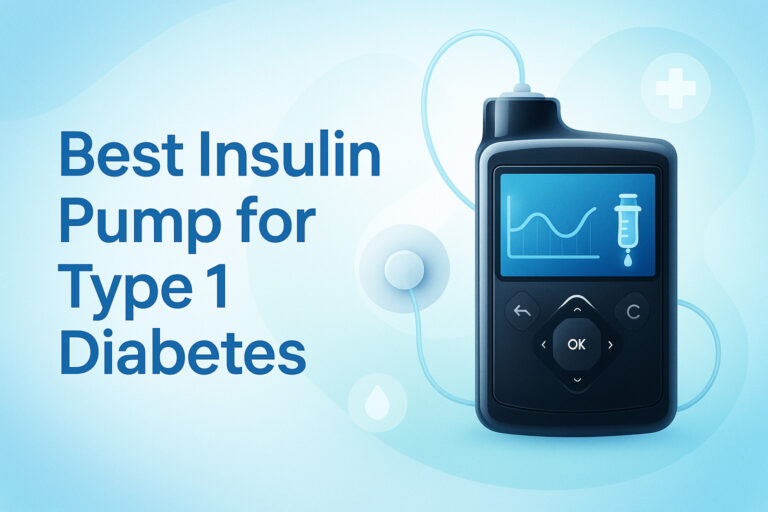Stelo vs Dexcom G7: The Complete CGM Comparison Guide
Choosing the right continuous glucose monitor (CGM) in 2025 has become more nuanced with Dexcom’s introduction of two distinct devices targeting different user populations. The stelo vs dexcom g7 comparison reveals significant differences that extend far beyond mere technical specifications. This comprehensive guide examines both devices across all critical dimensions to help you make an informed decision.
Executive Summary: Two Devices, Two Different Purposes
The fundamental distinction between these devices lies in their intended users and regulatory status. Dexcom Stelo represents the first FDA-cleared over-the-counter glucose biosensor, designed for adults 18+ who don’t use insulin, while Dexcom G7 remains a prescription medical device for diabetes management across all age groups.
Device Overview and Target Audiences
Dexcom Stelo: The Wellness-Focused Biosensor
Stelo received FDA clearance in March 2024 as the first over-the-counter continuous glucose monitor in the United States. This groundbreaking approval opened glucose monitoring to a broader audience, including individuals with prediabetes, type 2 diabetes not on insulin, and even those without diabetes interested in wellness tracking.
Target Users:
- Adults 18+ without diabetes seeking metabolic insights
- Individuals with prediabetes monitoring glucose patterns
- Type 2 diabetes patients not requiring insulin
- People who don’t experience problematic hypoglycemia
- Wellness enthusiasts tracking lifestyle impacts on glucose
Dexcom G7: The Medical-Grade CGM
The Dexcom G7 continues as Dexcom’s flagship medical device, designed for comprehensive diabetes management across all demographics. With its recent 15-day version receiving FDA clearance in April 2025, it maintains its position as the most advanced diabetes monitoring technology available.
Target Users:
- Individuals ages 2+ with any type of diabetes
- Insulin-dependent patients requiring real-time alerts
- People experiencing hypoglycemia who need safety alerts
- Users requiring integration with insulin delivery systems
- Patients needing comprehensive diabetes management tools
Detailed Feature Comparison of Stelo vs Dexcom G7 CGM
Technical Specifications Comparison Table
| Feature | Dexcom Stelo | Dexcom G7 (Standard) | Dexcom G7 (15-Day) |
|---|---|---|---|
| Wear Time | 15 days | 10.5 days | 15 days |
| Grace Period | 12 hours | 12 hours | 12 hours |
| Warm-up Time | 30 minutes | 30 minutes | 30 minutes |
| Reading Frequency | Every 15 minutes | Every 5 minutes | Every 5 minutes |
| MARD Accuracy | 8.3% | 8.2% | 8.0% |
| Age Range | 18+ years | 2+ years | 18+ years |
| Glucose Range | 70-250 mg/dL | 40-400 mg/dL | 40-400 mg/dL |
| Alerts/Alarms | None | Full suite | Full suite |
| Prescription Required | No | Yes | Yes |
Here’s our Dexcom 15 days CGM release date article!
Accuracy Analysis
Both devices demonstrate exceptional accuracy, with MARD (Mean Absolute Relative Difference) values representing industry-leading performance:
- Stelo: 8.3% MARD, 93% accuracy compared to laboratory blood glucose tests
- G7 Standard: 8.2% MARD for adults, 9.1% for sensors placed on the arm
- G7 15-Day: 8.0% MARD, representing the most accurate CGM available
The marginal differences in accuracy are clinically insignificant for most users, with all three variants exceeding FDA requirements for integrated CGM (iCGM) classification.
User Experience and App Features
Stelo App: Education-Focused Experience
The Stelo app prioritizes education and lifestyle insights over medical management:
Key Features:
- Smart Food Logging: AI-powered meal tracking with glucose impact analysis
- Spike Detection: Automated identification of glucose spikes with educational content
- Weekly Spike Reports: Pattern analysis and lifestyle recommendations
- Target Ranges: 70-140 mg/dL for non-diabetics, 70-180 mg/dL for type 2 diabetes
- Educational Content: Comprehensive glucose education and management tips
User Profile Options:
- No Diabetes
- Prediabetes
- Type 2 Diabetes
G7 App: Medical Management Platform
The Dexcom G7 app focuses on comprehensive diabetes management:
Advanced Features:
- Real-time Alerts: Customizable high/low glucose alarms
- Predictive Alerts: Advanced warning system for glucose trends
- 7-Day GMI: Glucose Management Indicator tracking
- Custom Target Ranges: Personalized glucose targets
- Share Feature: Real-time data sharing with up to 10 followers
- Insulin Pump Integration: Compatible with various insulin delivery systems
Cost Analysis and Accessibility
Stelo Pricing Structure
Dexcom Stelo pricing offers transparent, direct-pay options:
Pricing Options:
- One-time Purchase: $99 for 2 sensors (30-day supply)
- Monthly Subscription: $89 for 2 sensors (30-day supply)
- Annual Cost: Approximately $1,068-$1,188
- Payment Methods: FSA/HSA eligible, direct credit card payment
- Insurance: Not covered by insurance plans
G7 Cost Structure
Dexcom G7 costs vary significantly based on insurance coverage:
With Insurance:
- Commercial Insurance: As low as $89/month with copay assistance
- Medicare: 80% coverage after $257 deductible (2025)
- Medicaid: Coverage varies by state
Without Insurance:
- Annual Cost: $6,800+ per year
- Monthly Sensors: $572 for three sensors
- GoodRx Discount: Up to 63% off retail price
Cost Comparison Table
| Cost Factor | Dexcom Stelo | Dexcom G7 |
|---|---|---|
| Monthly Cost (Uninsured) | $89-$99 | $570+ |
| Annual Cost (Uninsured) | $1,068-$1,188 | $6,800+ |
| With Good Insurance | Not applicable | $89-$200/month |
| Medicare Coverage | None | 80% after deductible |
| FSA/HSA Eligible | Yes | Yes |
Safety Considerations and Limitations
Stelo Safety Profile
Important Limitations:
- No hypoglycemia alerts or alarms
- Not suitable for insulin users
- Cannot be used by individuals with problematic hypoglycemia
- Limited glucose range (70-250 mg/dL)
- No integration with insulin delivery systems
FDA Warning: The device explicitly states users should not take medical action based on readings without consulting healthcare providers.
G7 Safety Features
Comprehensive Safety System:
- Real-time high/low glucose alerts
- Predictive alerts for trend changes
- Urgent low glucose alarms
- Share alerts for caregivers
- Medical-grade accuracy for treatment decisions
- Compatible with insulin pumps and automated insulin delivery systems
Stelo vs Dexcom G7 Real-World User Experiences
Stelo User Feedback
User reviews reveal mixed but generally positive experiences:
Positive Aspects:
- Easy over-the-counter access
- Educational value for glucose awareness
- User-friendly app interface
- Affordable compared to prescription CGMs
Common Concerns:
- Some accuracy issues reported compared to blood glucose meters
- Limited app functionality compared to G7
- 20% of sensors may not last full 15 days
- No alert system for concerning glucose levels
G7 User Experience
G7 users consistently report high satisfaction with:
- Superior accuracy and reliability
- Comprehensive alert system
- Integration with diabetes management ecosystem
- Professional healthcare provider support through Dexcom Clarity
Integration and Compatibility
Device Ecosystem Integration
Stelo Compatibility:
- Apple Health integration
- Standalone app experience
- No insulin pump connectivity
- Limited third-party integrations
G7 Ecosystem:
- Multiple insulin pump partnerships
- Apple Health and other health platforms
- Healthcare provider platforms (Clarity)
- Automated insulin delivery system compatibility
- Share feature for family/caregiver monitoring
Decision-Making Framework
Choose Stelo If You:
- Are not using insulin and don’t experience hypoglycemia
- Want to explore glucose patterns without medical necessity
- Prefer over-the-counter accessibility without prescriptions
- Are budget-conscious and want predictable costs
- Are interested in wellness optimization rather than medical management
- Are 18+ years old and have type 2 diabetes, prediabetes, or no diabetes
Choose G7 If You:
- Use insulin or other glucose-lowering medications
- Experience hypoglycemia and need safety alerts
- Have type 1 diabetes or insulin-dependent type 2 diabetes
- Want the most accurate and comprehensive monitoring
- Need integration with insulin pumps or delivery systems
- Have insurance coverage that makes it affordable
- Are under 18 or managing diabetes in children
Future Outlook and Recommendations
The stelo vs dexcom g7 landscape represents Dexcom’s strategic approach to market segmentation. As over-the-counter CGM technology expands, we can expect:
- Broader Stelo adoption among wellness-focused consumers
- Enhanced app features and educational content for Stelo
- Continued G7 evolution with longer wear times and improved accuracy
- Potential new OTC competitors entering the market
- Healthcare system integration of both device types
Conclusion
The choice between Stelo and Dexcom G7 ultimately depends on your specific health needs, diabetes status, and monitoring goals. Stelo breaks new ground as an accessible wellness tool for glucose awareness, while G7 maintains its position as the gold standard for medical-grade diabetes management.
For individuals seeking glucose insights without medical necessity, Stelo offers unprecedented accessibility and value. For those managing diabetes, particularly with insulin, G7’s comprehensive safety features and medical-grade capabilities remain essential.
As the CGM market continues evolving, both devices serve important but distinct roles in democratizing glucose monitoring and supporting different aspects of metabolic health management.
Image Credit






Leave a Reply